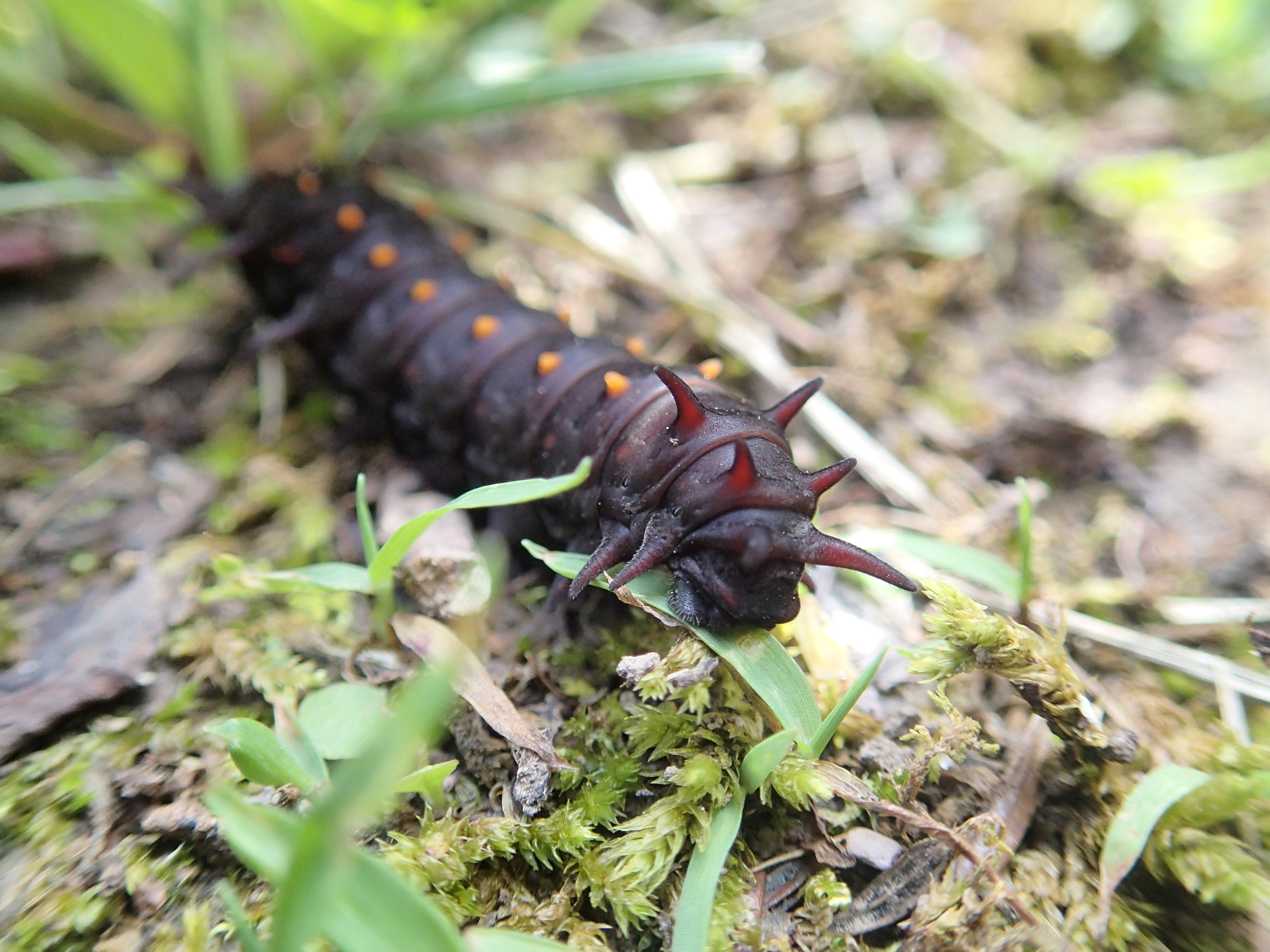Life history strategies on display!
This most recent BRDC visitor, a pipevine swallowtail caterpillar, gets its name from its obligate host plant, pipevine. The pipevine (or Dutchman’s pipe) is so named for its unusual lobed flowers that resemble Dutch smoking pipes. While the flowers’ shape makes them an unsuitable food source for adult pipevine swallowtail butterflies, the rest of the plant is essential for this butterfly’s life cycle.
These reddish-black, orange-spotted larvae feed exclusively on plants within the genus Aristolochia, which contain aristolochia acid, a toxin that the larvae ingest, making them distasteful and poisonous to potential predators. This toxin remains in the caterpillar’s body throughout metamorphosis and adulthood as a defense mechanism. Even the eggs retain this toxin when they are oviposited on the leaves and stems of the pipevine plant, ready to hatch out the next, hungry generation.
Here at BRDC we can currently see three different instars of the pipevine swallowtail caterpillar around the property!

